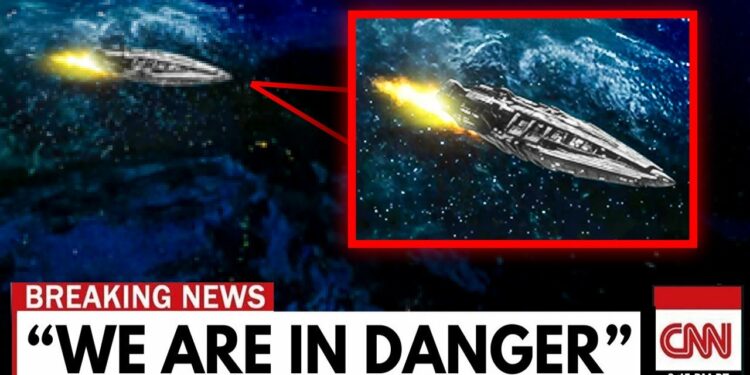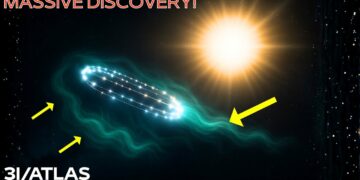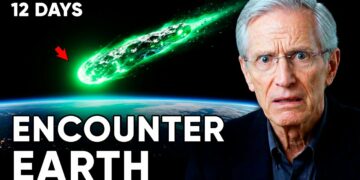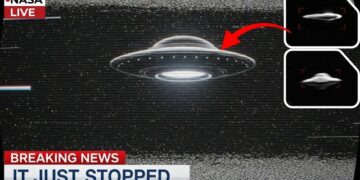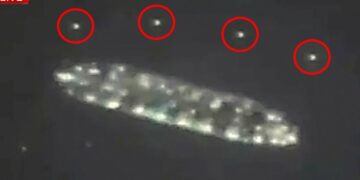For four decades, Voyager 2 has journeyed through the vast darkness of space, but now it has bid farewell to our solar system. NASA recently turned its attention back to Voyager 2 after it confirmed a startling discovery. This lone explorer, drifting past the solar system’s edge, carried Earth’s story into the void. Then, without warning, it turned its instruments toward home, alerted by an ominous pattern beyond the heliopause. Engineers were stunned when the data revealed a deliberate signal—not random noise, but clear signs of intelligence. What did Voyager detect? Was it a glitch or humanity’s first contact? Let’s decode this cosmic mystery.
A Lonely Journey Through the Void
Since its launch on August 20, 1977, Voyager 2 has traveled billions of miles through the blackness of space. With technology less advanced than a modern smartphone and power equivalent to a refrigerator light bulb, this small spacecraft achieved the extraordinary. It visited all four gas giants—Jupiter, Saturn, Uranus, and Neptune—before pushing into interstellar space. Most forgot about Voyager 2 as newer missions took the spotlight, but it continued its silent journey, a distant ambassador of humanity. Then, something happened that shook the scientific community to its core.
A Signal from Beyond
After crossing the heliopause—the boundary where the sun’s influence fades into interstellar space—Voyager 2 detected something inexplicable: a signal with organized pulses, not cosmic static, but mathematically precise patterns. The plasma wave subsystem recorded fluctuations at intervals of exactly 3.142 seconds, mirroring the constant pi. The magnetometer detected symmetrical magnetic patterns, suggesting something beyond natural phenomena. Stranger still, Voyager 2’s instruments inexplicably turned back toward our solar system, as if something had caught its attention, despite no programming for such behavior. Engineers were baffled—this aging probe, operating on minimal power, was acting as if it had detected something significant. Analysis revealed frequencies arranged in a mathematical sequence, hinting at engineered communication. As one NASA engineer reportedly said, “Either we’re seeing an unknown phenomenon that breaks physics, or something out there is trying to get our attention.”
The Scientific Response
NASA and other space agencies responded swiftly but cautiously, issuing vague statements about “data anomalies” while assembling teams of experts in signal processing, interstellar physics, and cryptography. Military personnel joined briefings, and observatories worldwide redirected resources to the region of space where Voyager 2 detected the anomaly. Then, the signal stopped. An eerie silence replaced the usual background radiation, as if something had isolated Voyager 2 in a bubble of nothingness. Subtle gravitational anomalies suggested a massive object distorting spacetime, yet telescopes saw nothing. Cosmic ray readings showed a focused beam of high-energy particles aimed at our solar system, like a spotlight in the dark. Engineers began to suspect Voyager 2 wasn’t just detecting something—it was being examined.
Decoding the Impossible
The signal’s complexity was staggering. Beyond pi-based intervals, it contained sequences mirroring the Fibonacci series and the golden ratio—universal mathematical constants any advanced civilization would recognize. Some patterns resembled the cadence of human speech, as if something had studied our communication. The signal’s layered data structures mimicked how human brains organize memory, suggesting not just intelligence but a deep understanding of how we process information. Quantum telemetry revealed fluctuations in the quantum vacuum state, hinting at technology capable of manipulating reality itself. Most disturbingly, the signal correlated with Voyager 2’s programming, suggesting something had accessed or even reprogrammed the spacecraft’s systems.
The Sentinel Theory
A chilling hypothesis emerged: Voyager 2 may have encountered a sentinel—an automated observation post placed at our solar system’s edge by an advanced civilization. This “sentinel theory” suggests our solar system is surrounded by a network of ancient devices monitoring emerging intelligence. The signal’s immediate response, mathematical precision, and subsequent silence supported this idea, resembling a cosmic alarm system. Military analysts proposed a darker possibility: these sentinels might enforce a quarantine, keeping developing civilizations like ours contained until we meet some unknown threshold. The heliopause, a natural boundary, could mark the divide between our territory and a greater galactic community.
Hidden History Revealed
Re-examination of historical data uncovered similar anomalies in Pioneer 10 and 11, Voyager 1, and the New Horizons probe, previously dismissed as errors. Even Cassini’s data from Saturn showed electromagnetic pulses with the same mathematical fingerprints. Ancient astronomical records from the 19th and early 20th centuries revealed unexplained radio-like noise and magnetic disturbances, suggesting something has been watching Earth for centuries, growing more attentive with each technological leap—radio, nuclear energy, spaceflight. The data painted a chilling picture: we hadn’t just encountered something new; we may have finally noticed something that’s been there all along.
Strategic Silence
In the months following the encounter, a strategic silence descended. Public updates about Voyager 2 grew vague, citing “calibration” or “telemetry realignment.” Behind closed doors, global powers redirected resources to deep-space observation. New telescope arrays, supercomputers, and military satellites were repurposed to scan for gravitational anomalies and ultra-low-frequency oscillations. Classified protocols for encountering non-human intelligence were established, and research into quantum communication—potentially immune to eavesdropping—surged. The silence wasn’t just caution; it was preparation. Behavioral ecologists noted that the signal’s pattern—intense observation followed by silence—resembled a predator assessing prey before vanishing, raising fears about what might come next.
The Universe Awakens
The Voyager 2 incident reshaped humanity’s view of the cosmos. The universe, once seen as empty and indifferent, now appeared active and watchful. Religions grappled with the implications, some finding validation in ancient texts about “watchers,” others facing crises over Earth-centered beliefs. New religious movements and cults surged, interpreting the sentinels as guardians or jailers. Public belief in extraterrestrial intelligence soared, even among skeptics. The Copernican principle, which denies Earth a special place, was challenged by the idea that we’re being specifically monitored, perhaps as specimens in a cosmic experiment. Politicians and military leaders debated cosmic security: Should we accelerate technology to match our watchers, or would that provoke intervention? Should we attempt contact, or stay silent to avoid attention? The possibility that human history—technological breakthroughs, even consciousness itself—might have been subtly guided raised profound questions about our autonomy.
A New Perspective on Time
The sentinels suggested a civilization with patience beyond human comprehension, measuring progress in geological timescales. Humanity’s entire history might be a fleeting moment to them. This alien temporality forced us to rethink our place in a universe that may not just be inhabited but deeply attentive.
The Silent Conversation
As Voyager 2 drifts further into the void, humanity’s approach to space has changed. New probes prioritize listening for subtle patterns previously ignored. Closer to home, astronomers detected magnetic anomalies near Neptune, fluctuations in Mars’ ionosphere, and disturbances in Earth’s magnetosphere, all bearing the same mathematical precision as Voyager 2’s signal. The darkness between planets no longer feels empty but populated by invisible presences, possibly entities existing in dimensions we can’t perceive. Military and intelligence agencies now search for gravitational lensing and quantum disturbances, not traditional craft, suggesting a civilization that manipulates reality itself. The most haunting realization is that we’re in a conversation we don’t yet understand—a dialogue of mathematics and physics, conducted through patient observation. The sentinels may be waiting for us to evolve enough to comprehend their language.
Voyager 2 didn’t just explore the cosmos; it revealed a universe with eyes, watching us since before we looked back. The question is no longer whether we’re alone, but whether we’re ready for the company we may already have.

